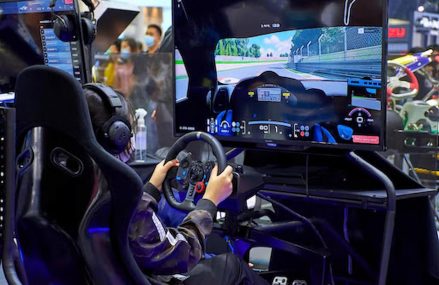What is Videoconferencing and when was it first used?
Video conferencing is the mode of communication for organisations or groups to arrange a meeting being at different places yet can be heard or seen in the discussion. It is basically used in commercial and corporate systems for conferences to conquer new deals with the clients or to establish better goals among parties with reputable relationships. Video conferencing has indeed become a medium to remove the distances and can establish relationship with clients. Videoconferencing was used first time with AT&T’s Picturephone service in the early 1970s. For short distances, transmissions were analogue and were digital for longer ones using telephone transmission technology. In today’s world, corporate video-conferencing systems have migrated almost exclusively to digital ISDN and IP transmission modes due to the requisite to transfer very large amounts of data generated by their cameras and microphones.
These systems are often projected for use in conference mode as can be used by many people in several different locations, all of whom can be viewed by every participant at each location.
Advancements in video conferencing systems
There has been lot of recent progress in the systems used for videoconferencing. Videoconferencing can be done by tele presence systems, mobile collaboration systems, TV cams, webcams or systems solely designed for video conferencing. Each has its own set of benefits and disadvantages which includes video or audio quality, transmission capacity, sophisticated machinery or cost of usage. Some of these systems are described below:
- Tele presence systems: It is more advanced way of communication with high video and audio quality. Full high-end systems need separate conference rooms for a good videoconference. It is highly expensive and best in quality and is basically used in corporate sectors.
- Mobile collaboration involves combination of audio, video and on-screen drawing with hand held electronic devices broadcasting it on a safe network for all the participants not present at same location.
- Videoconferencing designed systems: These are of medium range and use multi conference unit (MCU) service to allow multiple participants to attend video conferences. These services may vary from moderate to high.
- TV cams: TV cams have this special feature to make video “phone” calls using video calling services, like Skype on their TV, without using a proper connection. TV cams are specially designed video cameras that feed images in quick time to another TV camera or other compatible computing devices like smartphones, tablets and computers.
- Webcams used for videoconferencing are cost effective and are connected to personal computers and to other participants by computer and VoIP networks. Hence, it is affordable as the participants already possess computers at their individual locations. Quality of service can range from low to very high, including high definition (HD) video conferencing solutions available on the latest model webcams.
- TV camera which is usually small attached to TV via its HDMI port like the way a webcam is attached to a computer via a USB port.
These advancements have really made the distances less with the use of high technology audio and video services and hence have proved to be an important part for cracking many deals in the corporate sector.



